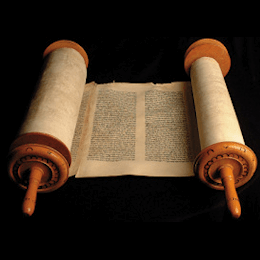Textus Receptus Bibles
Masoretic Text 1524
Old Testament
| 64:1 | (63:19) עליהם לוא קרעת שׁמים ירדת מפניך הרים נזלו |
| 64:2 | (64:1) כקדח אשׁ המסים מים תבעה אשׁ להודיע שׁמך לצריך מפניך גוים ירגזו׃ |
| 64:3 | (64:2) בעשׂותך נוראות לא נקוה ירדת מפניך הרים נזלו׃ |
| 64:4 | (64:3) ומעולם לא שׁמעו לא האזינו עין לא ראתה אלהים זולתך יעשׂה למחכה׃ |
| 64:5 | (64:4) פגעת את שׂשׂ ועשׂה צדק בדרכיך יזכרוך הן אתה קצפת ונחטא בהם עולם ונושׁע׃ |
| 64:6 | (64:5) ונהי כטמא כלנו וכבגד עדים כל צדקתינו ונבל כעלה כלנו ועוננו כרוח ישׂאנו׃ |
| 64:7 | (64:6) ואין קורא בשׁמך מתעורר להחזיק בך כי הסתרת פניך ממנו ותמוגנו ביד עוננו׃ |
| 64:8 | (64:7) ועתה יהוה אבינו אתה אנחנו החמר ואתה יצרנו ומעשׂה ידך כלנו׃ |
| 64:9 | (64:8) אל תקצף יהוה עד מאד ואל לעד תזכר עון הן הבט נא עמך כלנו׃ |
| 64:10 | (64:9) ערי קדשׁך היו מדבר ציון מדבר היתה ירושׁלם שׁממה׃ |
| 64:11 | (64:10) בית קדשׁנו ותפארתנו אשׁר הללוך אבתינו היה לשׂרפת אשׁ וכל מחמדינו היה לחרבה׃ |
| 64:12 | (64:11) העל אלה תתאפק יהוה תחשׁה ותעננו עד מאד׃ |

Masoretic Text 1524
The Hebrew text of the Old Testament is called the Masoretic Text because in its present form it is based upon the Masora—the Hebrew, textual tradition of the Jewish scholars known as the Masoretes (or Masorites). The Masoretes were rabbis who made it their special work to correct the faults that had crept into the text of the Old Testament during the Babylonian captivity, and to prevent, for the future, its being corrupted by any alteration. They first separated the apocryphal from the canonical books, and divided the latter into twenty-two books, being the number of letters in the Hebrew alphabet. Then they divided each book into sections and verses.
There is a great difference of opinion as to when the Masoretic Text was written, but it was probably accomplished in the 10th -11th century. Several editions existed, varying considerably, but the received and authoritative text is that of Jacob ben-chayim ibn Adonijah, who carefully sifted and arranged the previous works on the subject. It was published in 1524.